
Growing an erigeron in a pot
How to grow an erigeron in a pot?
Contents
The erigeron or fleabane is a stunning perennial plant that adds colour to gardens, balconies, and terraces from June until autumn. It is covered in single, semi-double, or double flowers, depending on the varieties. Very similar to daisy or aster flowers, the blooms come in soft shades such as pink, white, purple, and mauve, with a beautiful yellow centre. Depending on the varieties, the foliage can be evergreen or deciduous, and the height can reach up to 70 cm. With a compact or carpet habit, erigeron can be grown both in the ground and in pots. Let yourself be tempted by this beautiful perennial fleabane with its colourful and generous flowering!
 Pot of Karvinskianus Fleabane
Pot of Karvinskianus Fleabane
Here are our valuable tips for successfully planting an erigeron in a pot to enjoy its abundant flowering for as long as possible.
Which pot to choose for Erigeron?
Drainage holes at the bottom of the pot are essential when choosing a pot, as erigerons do not tolerate excess moisture. Whether for acquiring a container, a pot, or a planter, pay attention to this crucial detail for the health of your fleabane!
Opt for a terracotta pot, which is more stable and porous, with a diameter of between 30 and 60 cm. Adjust the diameter to the chosen variety! Always select a pot larger than the root ball of the purchased plant. Avoid choosing one that is too tall, as it may topple in strong winds.
You can even dare to hang it by planting an Erigeron karvinskianus with a more or less spreading habit, which will create stunning cascades with surprising results!
Read also
Erigeron, fleabane: planting, growingWhich substrate to choose for a pot-grown Erigeron?
Choose a special compost for pots and containers or a universal compost that you can mix with garden soil, if it is not too rich.
Discover other Erigeron - Fleabane
View all →Available in 4 sizes
Available in 1 sizes
Available in 1 sizes
Available in 1 sizes
Available in 1 sizes
Available in 1 sizes
Available in 2 sizes
Available in 1 sizes
Available in 1 sizes
Available in 1 sizes
When and how to pot Erigeron?
For better establishment, we recommend planting the young plant in autumn, from September to November. Always choose a day outside of frost periods. The rooting will be much better! Note that planting is also possible in spring, in April and May, outside of spring frosts.
Here are some valuable tips for successfully planting an erigeron in a pot:
- Soak the erigeron in a basin of water to rehydrate the root ball;
- Ensure there are drainage holes at the bottom of the pot; if absent, create them using a drill;
- Place a layer of gravel, small stones, pumice, or clay balls at the bottom, about 5 cm deep to ensure optimal drainage;
- Fill the pot with potting soil;
- Position the rehydrated plant in the centre of the container, ensuring the collar is level with the surface of the pot;
- Fill in the gaps around the root ball;
- Firm the surface with your hands and add more potting soil if necessary;
- Water generously.
Feel free to plant several young plants in a large pot to create an XXL display. Ideally, place it in the sun, although the erigeron can tolerate some shade. If placed in the shade, flowering will be reduced.
How to care for pot-grown erigeron?
Hardy perennial plants down to -15°C and even -20°C, erigerons do not require special winter protection. Easy to grow, they need minimal maintenance. Remove faded inflorescences as they appear to maintain a long-lasting flowering period. To achieve this, prune once or twice during the summer. Once flowering is finished, cut the plant back to 10 cm using shears to stimulate its growth in the following spring and encourage a compact habit.
For tall varieties measuring 60 to 70 cm in height, such as ‘Schwarzes Meer’, ‘Dunkelste Aller’, ‘Foersters Liebling’, or speciosus ‘Grandiflorus’, install a decorative stake and choose a sheltered location to prevent the stems from bending under the force of the wind.
When the plant is pot-bound or shows signs of fatigue, divide in spring if possible, to rejuvenate it. To do this, remove the root ball from its pot, then, using a spade or pruning saw, cut and take different sections to replant in another pot or directly in the ground to brighten up a border, a bed, or a wall.
What about watering and fertiliser?
Erigeron does not need fertiliser to grow and become covered in a profusion of small, colourful flowers. Low in water requirements, it withstands periods of drought.
To enjoy a summer without chores, feel free to mulch the surface of the pot to retain moisture and reduce watering. If you increase watering towards the end of summer, erigeron can develop a second late flowering in autumn. In winter, stop watering.
For further reading
Discover our advice sheets:
- Subscribe!
- Contents
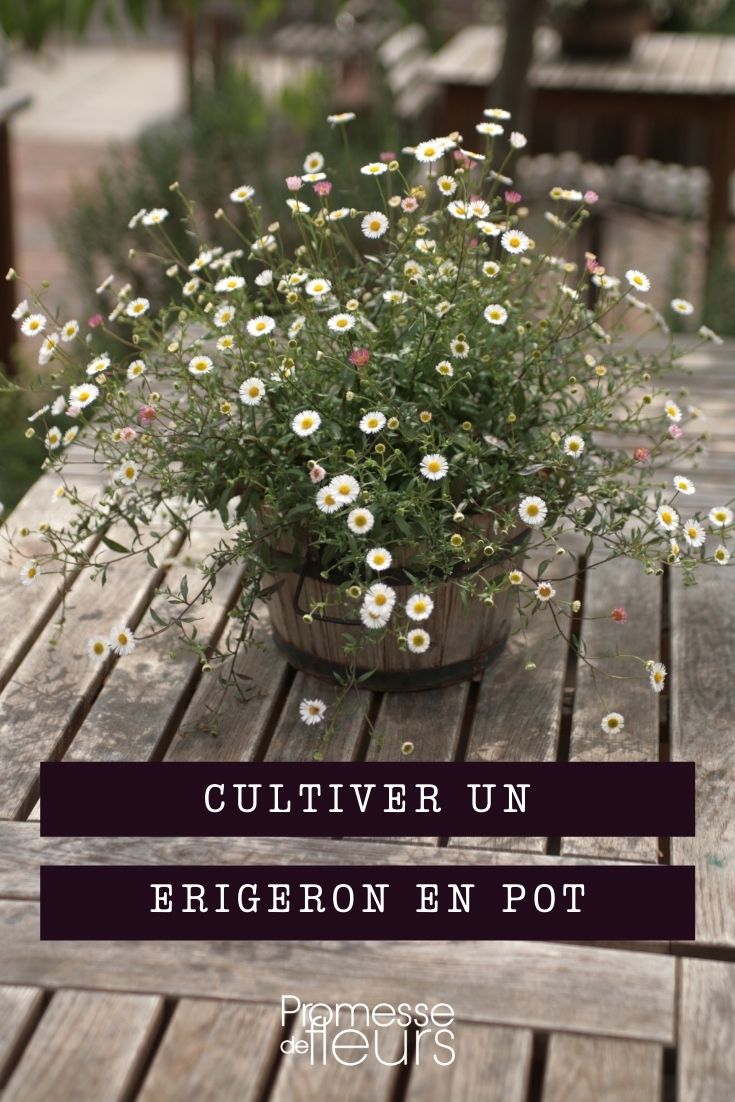































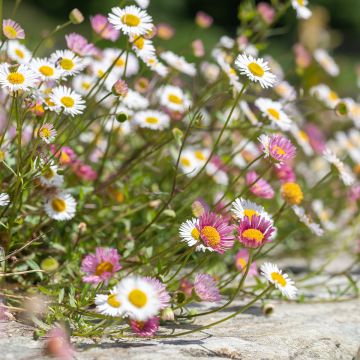
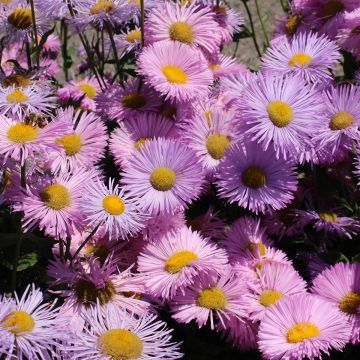
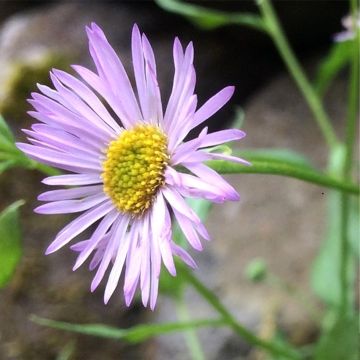
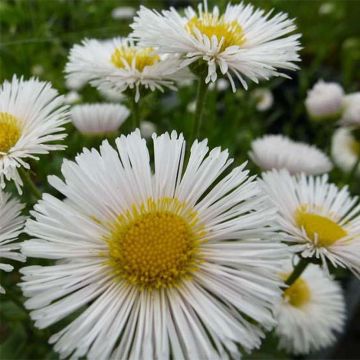

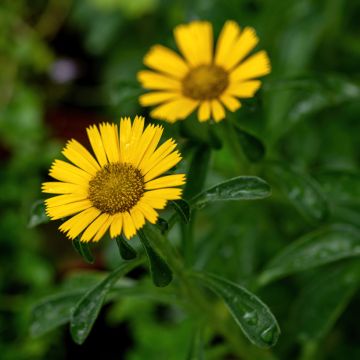




Comments